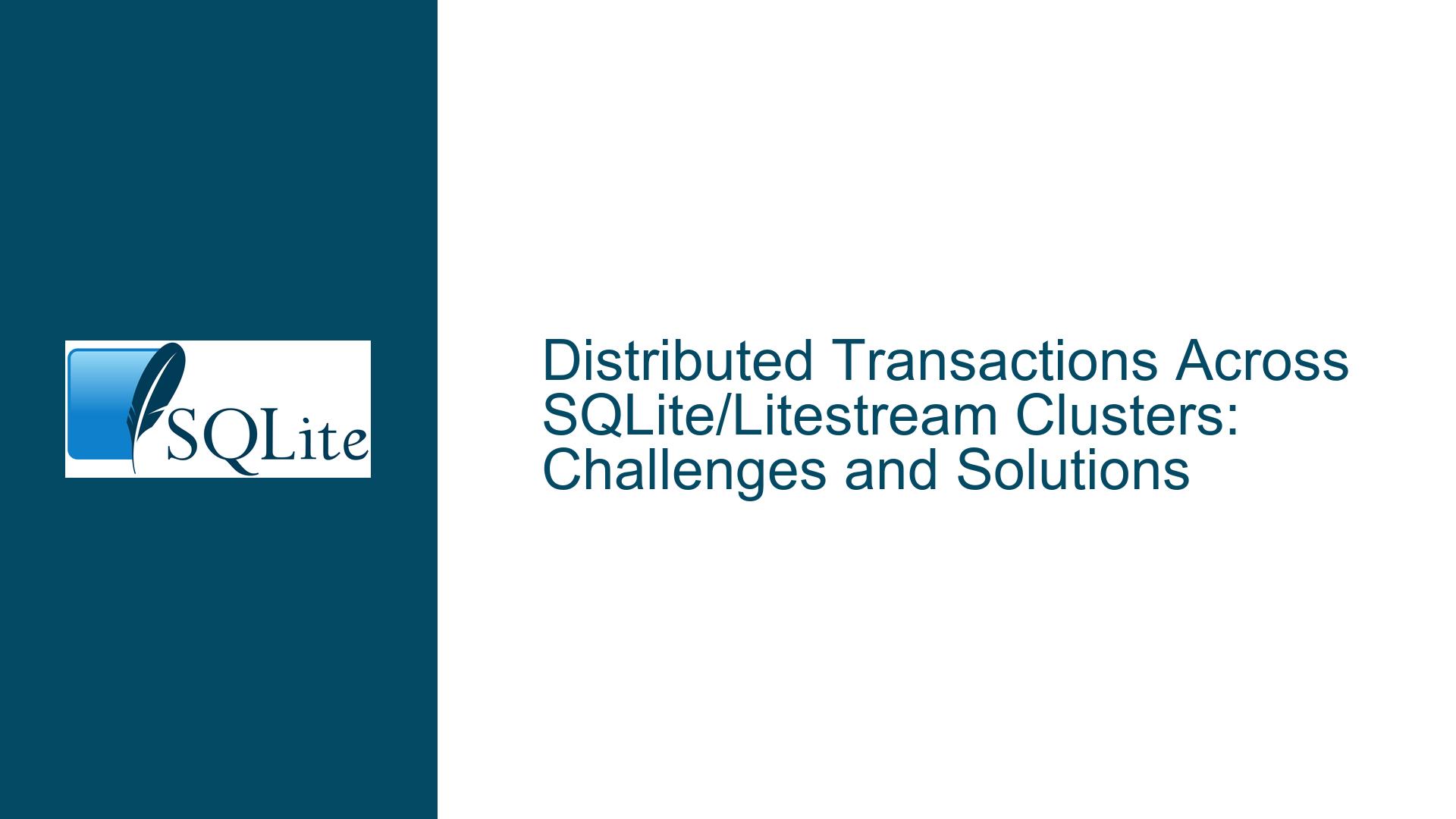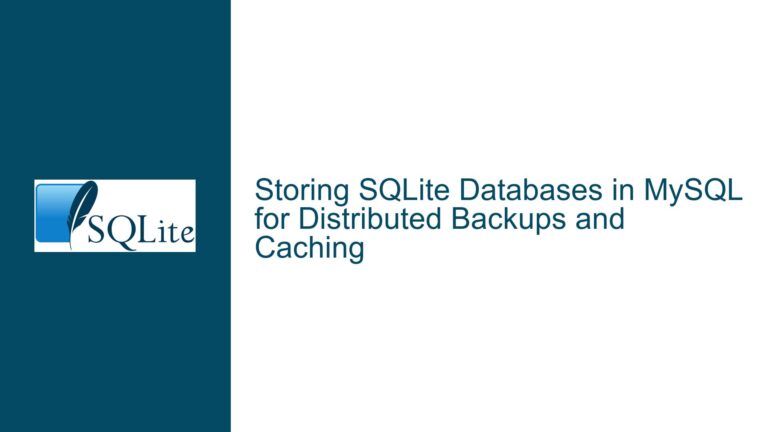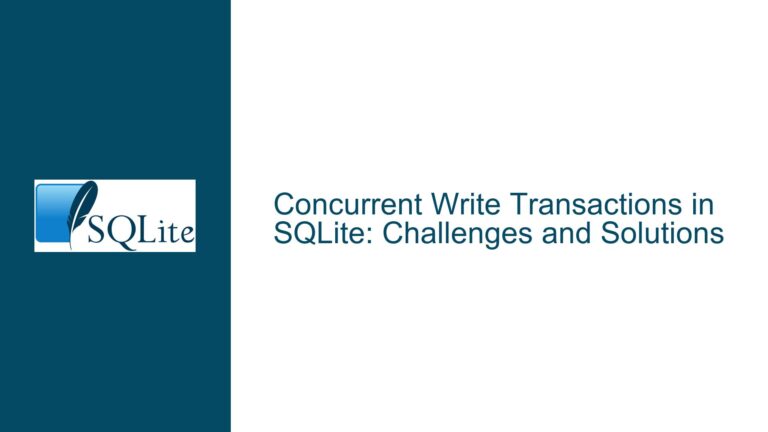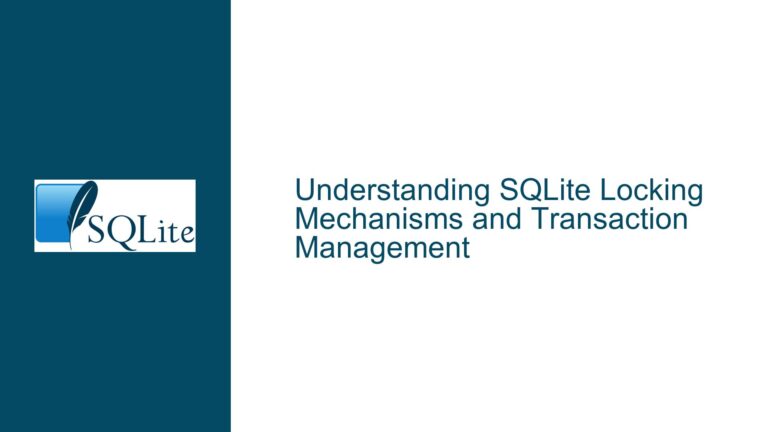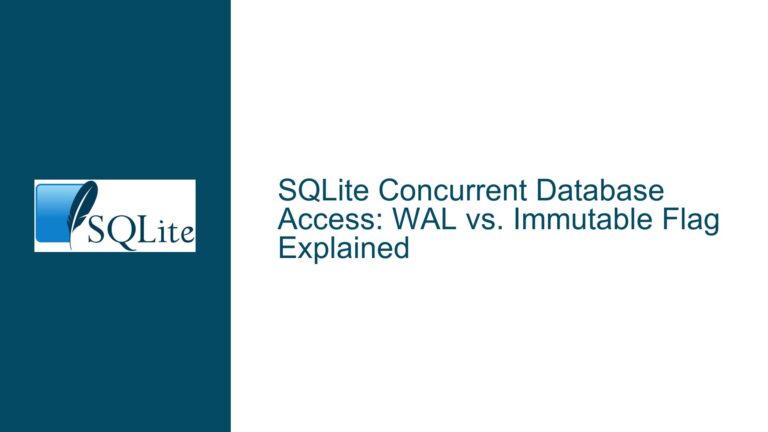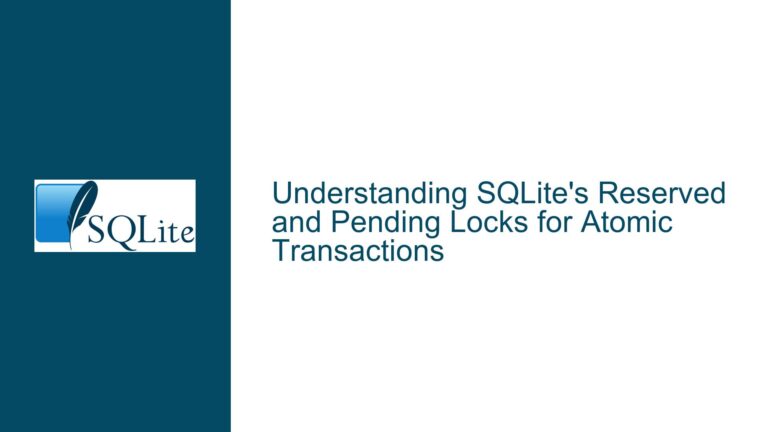Distributed Transactions Across SQLite/Litestream Clusters: Challenges and Solutions
Understanding Distributed Transactions in SQLite with Litestream Replication
Distributed transactions are a complex topic in database systems, especially when dealing with lightweight databases like SQLite. SQLite is designed as a serverless, single-file database, which inherently lacks built-in support for distributed transactions. However, with tools like Litestream, which replicates SQLite databases to cloud storage such as S3, the landscape changes. Litestream enables a form of distributed architecture by allowing multiple instances of SQLite to operate on replicated data. This setup introduces challenges when attempting to coordinate transactions across multiple instances, as SQLite does not natively support distributed transaction protocols like two-phase commit (2PC).
The core issue revolves around ensuring atomicity, consistency, isolation, and durability (ACID) across multiple SQLite instances that are replicating data via Litestream. In a distributed environment, a transaction might span multiple databases, and ensuring that all participating databases either commit or rollback together is non-trivial. The lack of distributed transaction support in SQLite means that developers must implement custom solutions to achieve this, which can be error-prone and inefficient.
The primary challenge is maintaining consistency across replicas. For example, if a transaction updates data in two separate SQLite instances, and one instance commits while the other fails, the system is left in an inconsistent state. This inconsistency can propagate through Litestream replication, leading to data divergence across replicas. Additionally, the latency introduced by replication and the potential for network partitions further complicates the problem.
Why Distributed Transactions Are Problematic in SQLite/Litestream Clusters
The difficulty of implementing distributed transactions in SQLite/Litestream clusters stems from several inherent limitations and design choices. First, SQLite is a single-writer database, meaning only one process can write to the database file at a time. This restriction is at odds with the distributed nature of Litestream, where multiple instances might attempt to write simultaneously. While Litestream handles replication asynchronously, it does not provide mechanisms for coordinating writes across instances.
Second, SQLite’s transaction model is designed for local operations. It uses a write-ahead log (WAL) to ensure durability and atomicity within a single instance, but this model does not extend to distributed environments. In a distributed setup, coordinating the WAL across multiple instances would require a consensus protocol, which SQLite does not implement.
Third, Litestream’s replication model is eventually consistent. Changes made to one SQLite instance are asynchronously replicated to others, but there is no guarantee of immediate consistency. This eventual consistency model is incompatible with the strict consistency requirements of distributed transactions, where all participants must agree on the outcome of a transaction before it is considered complete.
Finally, network latency and partitions introduce additional challenges. In a distributed system, communication between nodes is subject to delays and potential failures. These issues can lead to scenarios where a transaction appears to succeed on one node but fails on another, resulting in data inconsistency.
Strategies for Implementing Distributed Transactions in SQLite/Litestream Clusters
While SQLite and Litestream do not natively support distributed transactions, there are strategies to achieve similar functionality. These strategies involve custom coordination mechanisms and careful design to ensure consistency and atomicity across instances.
1. Application-Level Coordination: One approach is to implement distributed transaction logic at the application level. This involves using a consensus protocol, such as Paxos or Raft, to coordinate transactions across SQLite instances. The application would act as a transaction manager, ensuring that all participating instances agree on the transaction outcome before committing. This approach requires significant development effort and introduces additional complexity, but it can provide the necessary guarantees for distributed transactions.
2. Two-Phase Commit (2PC) Emulation: Another strategy is to emulate the two-phase commit protocol. In this model, the application first prepares all participating SQLite instances by writing the transaction data to a temporary state. Once all instances acknowledge the prepare phase, the application sends a commit message to finalize the transaction. If any instance fails during the prepare phase, the application can abort the transaction. While this approach mimics distributed transaction behavior, it is prone to failures if the application or network experiences issues during the commit phase.
3. Conflict-Free Replicated Data Types (CRDTs): For scenarios where strict consistency is not required, CRDTs can be used to manage data across SQLite instances. CRDTs are data structures designed to handle concurrent updates in distributed systems without requiring coordination. By using CRDTs, developers can achieve eventual consistency without the overhead of distributed transactions. However, this approach is limited to specific use cases where conflicts can be resolved automatically.
4. Partitioning and Sharding: To reduce the need for distributed transactions, data can be partitioned or sharded across SQLite instances. Each instance is responsible for a subset of the data, and transactions are limited to a single instance. This approach eliminates the need for cross-instance coordination but requires careful design to ensure that data is distributed effectively.
5. External Transaction Managers: Leveraging external tools or services that provide distributed transaction capabilities can also be a viable solution. For example, using a distributed database like CockroachDB or TiDB as a coordination layer can help manage transactions across SQLite instances. These tools handle the complexity of distributed transactions, allowing SQLite to focus on local operations.
6. Hybrid Approach: Combining multiple strategies can provide a balance between consistency and performance. For instance, using application-level coordination for critical transactions and CRDTs for less critical data can reduce the overhead of distributed transactions while maintaining consistency where it matters most.
Practical Steps for Implementing Distributed Transactions
Implementing distributed transactions in SQLite/Litestream clusters requires careful planning and execution. Below are detailed steps to guide the process:
Step 1: Assess Transaction Requirements
Begin by analyzing the specific requirements of your application. Determine which transactions need to be distributed and what level of consistency is required. For example, financial transactions may require strict consistency, while logging data may tolerate eventual consistency.
Step 2: Design a Coordination Mechanism
Choose a coordination mechanism based on your requirements. For strict consistency, consider implementing a two-phase commit protocol or using an external transaction manager. For eventual consistency, explore CRDTs or partitioning strategies.
Step 3: Implement Transaction Logic
Develop the logic for managing distributed transactions in your application. This includes handling the prepare, commit, and abort phases, as well as resolving conflicts and retrying failed transactions.
Step 4: Test for Failure Scenarios
Simulate network partitions, node failures, and other edge cases to ensure that your implementation handles these scenarios gracefully. Use tools like Chaos Monkey or custom scripts to introduce failures during testing.
Step 5: Monitor and Optimize
Once deployed, monitor the performance and consistency of your distributed transactions. Use metrics and logs to identify bottlenecks and optimize the system as needed.
Step 6: Document and Iterate
Document your implementation and share it with your team. Gather feedback and iterate on the design to improve reliability and performance.
By following these steps and leveraging the strategies outlined above, you can implement distributed transactions in SQLite/Litestream clusters. While the process is complex, the result is a robust and scalable system that maintains data consistency across distributed environments.
